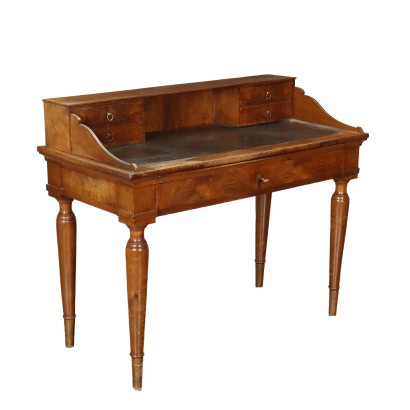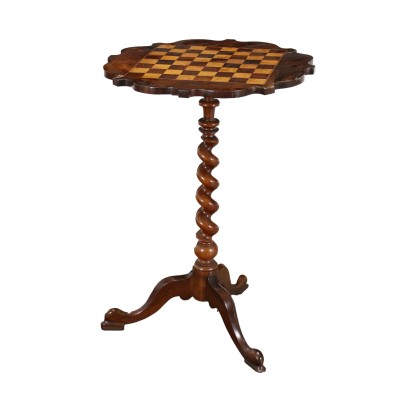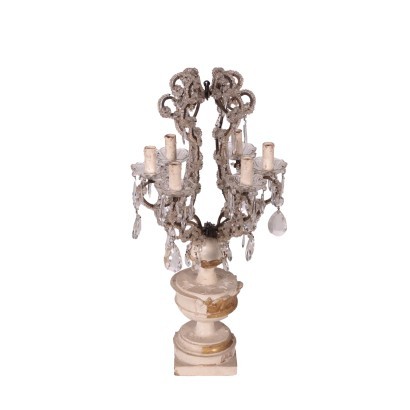Writing Desk Cherry Italy XIX Century - Italy Mid 19th century
Features
Italy Mid 19th century
Age: 19th Century / 1801 - 1900
Origin: Italy
Main essence: Silver Fir , Cherry , Walnut
Material: Leather , Walnut , Duffle
Description
Open writing desk in cherry wood and walnut veneer and walnut pedule, Italy mid-19th century. Top with 4-drawer riser and Moroccan insert, drawer with green cloth and drawer with compartments in the band, tapered truncated cone legs. Interior in cherry and fir. Undermount drawer bottom replaced, solid cherry legs with non-coeval foot tip.
Product Condition:
Product that due to age and wear requires restoration and resumption of polishing.
Dimensions (cm):
Height: 100
Width: 119
Depth: 59
Additional Information
Age: 19th Century / 1801 - 1900
19th Century / 1801 - 1900Main essence:
Silver Fir
Soft coniferous wood, used for rustic furniture or to build the chest, that is the structure, of furniture then veneered in more precious woods. It has been used since ancient times, its most valuable use is, in the Spruce variant, in the inlays of French antique furniture of the '700 . The spruce, more typical of northern Europe, in Italy grows mainly in the Eastern Alps at altitudes above 1300 m. The noblest use of this essence was in the construction of violins, guitars and cellos: Stradivari himself produced his famous violins with this wood.Cherry
Obtained from prunus cerasus , a plant of oriental origin, it is a hard wood with a light and delicate color, with a reddish vein. Due to its diffusion and availability it was used in Europe in popular furniture. In cabinet making, in the seventeenth century, it was widely used in France and England for inlay work. In Italy it was very successful in Lucca. It was also very popular in the United States for the manufacture, from the late 1600s, of commonly used furniture.The dictionary of antiques: Eclecticism
Classic Monday: a sofa from the 1800s example of eclecticism


























